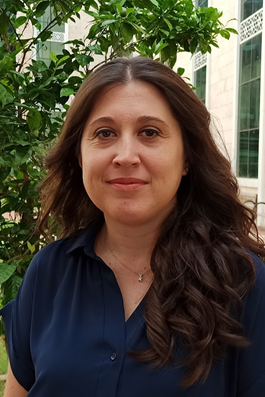
Özge Metin Aslan, PhD, is a visiting research scholar at CDLS. She is a expert on play who completed her studies in early childhood education at Hacettepe University in Ankara, Türkiye. Right now, Özge is working on a study on children’s connections to nature. Marie Lister, director of teaching and research, caught up with Özge to learn more.
ML: Can you tell us about the research project that you’re conducting right now?
OMA: Right now, I’m working with Dr. Sheila Williams Ridge on a research project exploring how young children in urban settings develop a connection with nature. We’re investigating how factors like outdoor time, school policies, and daily interactions with natural elements influence their biophilia—their natural affinity for the environment. Through surveys and interviews with preschoolers, teachers, and families, we aim to understand what supports or limits nature-connectedness in early childhood education. More than just measuring outdoor time, we’re looking at how children engage with nature—whether through free exploration, structured activities, or everyday play. Our goal is to provide insights that help schools integrate meaningful nature-based experiences, even in urban environments, fostering children’s natural curiosity and connection to the world around them.
How do you think this research will be useful to children and families?
I think this research will be really helpful for both kids and families in a lot of ways. First, it highlights just how important a connection with nature is—especially in cities where access to green spaces can be limited. Many parents might not realize how much outdoor time (or the lack of it) affects their child’s mood, creativity, and even focus. This study helps show that being in nature isn’t just a nice extra—it’s actually essential for kids’ overall development. For kids, the research could lead to better learning environments. If we can show that things like unstructured outdoor play or nature-based activities help children learn and feel better, then schools might be more encouraged to include these approaches. That means more opportunities for kids to engage with nature, even in urban settings. At the end of the day, I hope this research makes it easier for families and educators to take what we know from science and apply it in real life—helping kids have more meaningful, engaging, and nature-filled early childhood experiences.
How has your experience been working at CDLS?
Working at CDLS has been a really special experience for me, especially because this isn’t my first time here. I was at CDLS 14 years ago, back when it was still in the historical building, and because of this, I could feel the unique spirit of the place. That experience was a turning point in how I viewed early childhood education. CDLS has a long and important history in the field—it’s been a model for research and best practices in early childhood education for decades. Being part of a place with such a rich legacy, where so many influential studies have been conducted, has been incredibly inspiring.
Coming back now, in a new building but with the same strong philosophy, has been a full-circle moment for me. The way CDLS values play, child-led learning, and connection with nature has deepened my perspective as a researcher. It’s not just a school—it’s a space where research and practice come together to truly shape the future of early childhood education.
Another highlight has been working alongside educators and researchers who are equally passionate about early childhood education. The collaborative atmosphere at CDLS has allowed me to refine my research approach and gain insights from teachers who bring their hands-on experience to the table. Their perspectives on children’s interactions with nature have been incredibly valuable in shaping my study. Overall, my time at CDLS has deepened my appreciation for how research and practice can inform each other. It has also strengthened my belief that creating opportunities for children to connect with nature—no matter where they are—should be a priority in education.
Any advice for someone coming to do research at CDLS?
If you’re coming to do research at CDLS, my biggest advice is to be present, be flexible, and be open to learning from both the children and the educators. CDLS isn’t just a research site—it’s a living, dynamic environment where play, curiosity, and discovery happen naturally. Take the time to build relationships with the teachers. Their insights and daily experiences with children can give you a much deeper understanding than data alone. Also, respect the natural rhythm of the school day—try to blend into the environment rather than disrupt it. And most importantly, immerse yourself in the space. Spend time outdoors, observe how children interact with nature, and let those experiences shape your perspective. The more you engage with the environment and the people here, the richer your research will be.
Is there anything else you’d like to share?
Being here feels like coming home. Returning to CDLS after 14 years has been a deeply meaningful experience for me. The spirit of this place—its commitment to play, child-led learning, and connection with nature—has remained just as strong, and it’s incredible to be part of it again. Feeling like I’m a part of this again is truly special, and I’m grateful for the opportunity to contribute and learn alongside such passionate educators and researchers.
